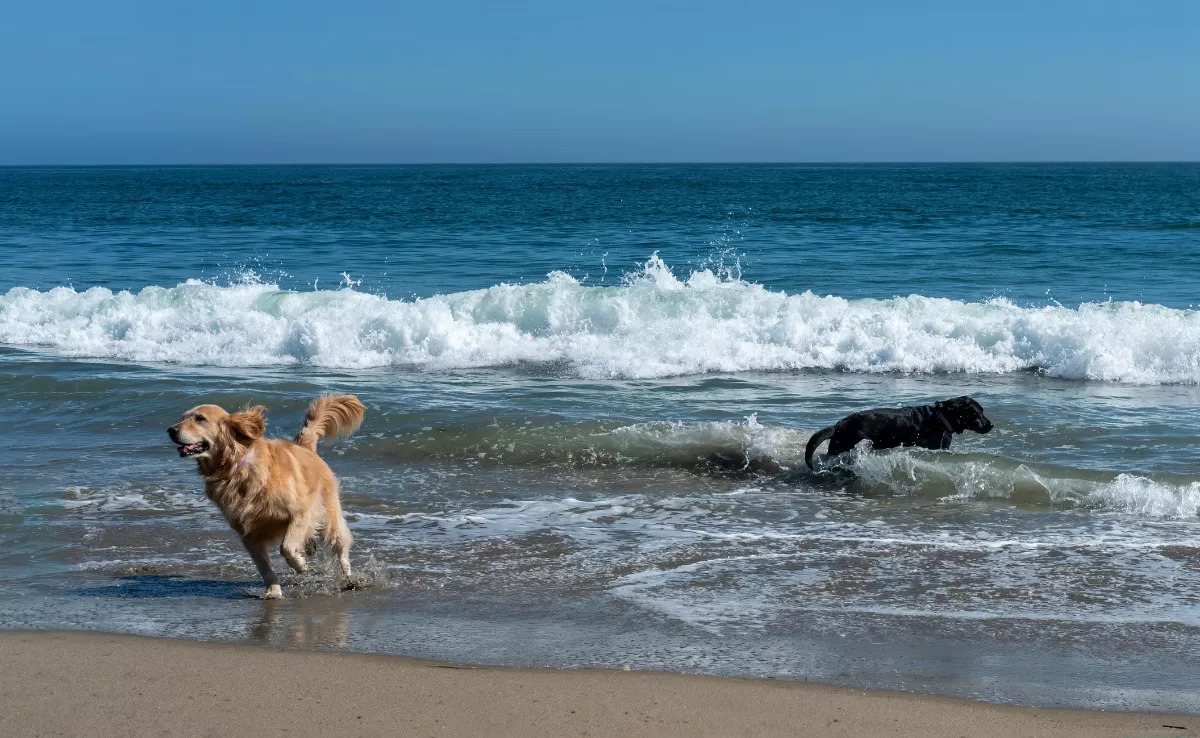
There are summers that cannot be understood without sand between your toes, waves crashing nearby, and a furry friend running free through puddles. More and more people want to share their holidays with their dogs, but not all beaches are prepared—or authorised—for this. Although they are few, Tenerife already has several areas designed for our pets to enjoy the coastline without restrictions or penalties.
Currently, the island has three officially designated dog beaches, with a fourth in the pipeline. All are marked and have clear rules to ensure safe and respectful coexistence.
Situated in the municipality of Granadilla de Abona, next to the popular La Tejita beach, lies El Confital—also known as El Horno—an inlet of volcanic rock and pebbles sheltered from the wind by Montaña Roja. This is the largest area for dogs on the island. It is open year-round and features hose-type showers, specific litter bins, and nearby parking. Thanks to its spaciousness, it is ideal for active dogs and families looking for a peaceful spot to enjoy.
In the heart of Palm-Mar, within the municipality of Arona, is El Callao (Las Bajas). It is a small stretch of volcanic boulders at the end of the promenade, accessible by foot and almost level, making it a perfect location for older dogs or those with limited mobility. While it lacks showers, it does have litter bins and free parking. It is advisable to bring water to rinse the dog after bathing, as the surroundings can be slightly more rugged than at other beaches.
At Playa del Cabezo, the Güímar City Council has established a dog area between groynes 1 and 3. The sand is dark and the waves are moderate. This is the most convenient option for those living between Santa Cruz and the southern part of the island. The area is equipped with independent showers, bins for dog waste, and visible signage. It is one of the best-maintained in terms of regulations and supervision, especially on weekends.
All dog beaches in Tenerife share a specific regulation that local councils have installed on visible signs (in Spanish and English), which must be strictly adhered to in order to avoid penalties:
– Health booklet and microchip: the pet must have a chip and be up-to-date on rabies vaccinations. Local police may request documentation at any time, especially on busy days.
– Leash in access and exits: the dog must be on a lead when entering and exiting the dog area. Only inside can it be off-lead, except for potentially dangerous breeds, which must always wear an approved muzzle and a short lead.
– Mandatory waste collection: the councils provide specific bins and, during peak season, dispensers for bags. Fines for not cleaning up range from 150 euros in Arona to 300 euros in Granadilla.
– Flags and safety: if a red or yellow flag is flying, it is recommended to keep the dog on a lead even within the authorised area. Lifeguards may evict if the sea conditions pose a risk to the animals.
– Coexistence rules: using shampoo in the showers, feeding other dogs without permission, or placing umbrellas outside the designated area is prohibited. The owner of the dog will always be responsible for any damage.
The Santa Cruz de Tenerife City Council has already commissioned the project to establish the first dog beach in the municipality: a specific stretch at Las Gaviotas, an iconic small cove in Anaga. The plan includes bins, showers, signage, and a removable walkway to facilitate access. If the timelines are met, it will open throughout 2025, becoming the fourth dog beach in Tenerife.















